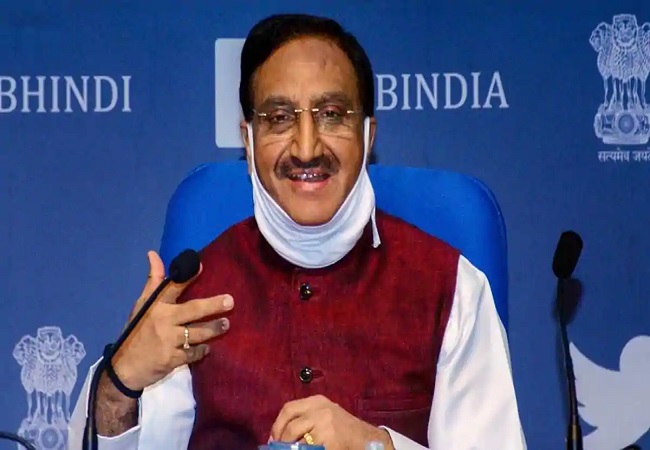
New Delhi: The Union Cabinet on Wednesday unveiled a new National Education Policy (NEP) for schools and higher education institutions in the country. The policy comes after almost three decades.
The NEP is set to usher in a slew of changes with the vision of creating an education system that contributes directly to transforming the country, providing high-quality education to all, and making India a global knowledge superpower.

The draft of the NEP by a panel headed by former Indian Space Research Organisation (ISRO) chief Kasturirangan and submitted to the Union Human Resource Development Minister Ramesh Pokhriyal when he took charge last year. The new NEP replaces the one formulated in 1986.
Some of the key highlights of the New Education Policy are:-
# Mother tongue to be a medium of instruction till fifth grade. Sanskrit to be offered at all school levels and higher education as option, including in three-language formula.
# MPhil courses to be discontinued under the new policy. All higher education institutions, except legal and medical colleges, will be governed by single regulator.
# The NEP aims to enable an individual to study one or more specialized areas of interest at a deep level, and also develop character, scientific temper, creativity, spirit of service, and 21st century capabilities across a range of disciplines including sciences, social sciences, arts, humanities, among others.

It identified the major problems facing the higher education system in the country and suggested changes such as moving towards multidisciplinary universities and colleges, with more institutions across India that offer medium of instruction in local/Indian languages, a more multidisciplinary undergraduate education, among others. The governance of such institutions by independent boards having academic and administrative autonomy has also been suggested.
Under the suggestions for institutional restructuring and consolidation, it has suggested that by 2040, all higher education institutions (HEIs) shall aim to become multidisciplinary institutions, each of which will aim to have 3,000 or more students, and by 2030 each or near every district in the country there will be at least one HEI.

The aim will be to increase the Gross Enrolment Ratio in HEIs including vocational education from 26.3 per cent (2018) to 50 per cent by 2035. Single-stream HEIs will be phased out over time, and all will move towards becoming vibrant multidisciplinary institutions or parts of vibrant multidisciplinary HEI clusters.
It also pushes for more holistic and multidisciplinary education to be provided to the students. (ANI)




